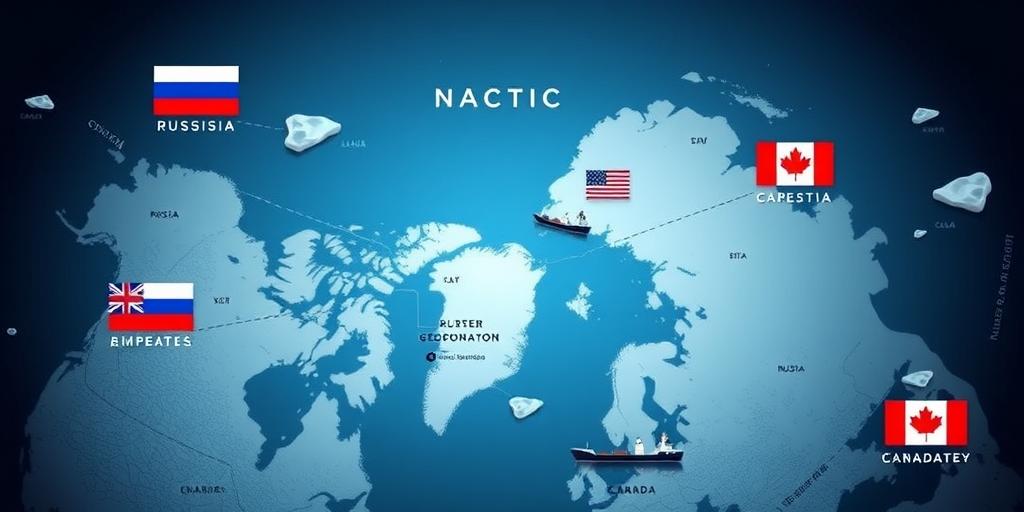The Arctic: A New Arena for Geopolitical Competition
The Arctic, once a remote and largely ignored region, is rapidly transforming into a critical geopolitical hotspot. Several factors contribute to this shift, including climate change, resource availability, and strategic location.
Climate Change and Accessibility
The most significant driver of change in the Arctic is climate change. Rising temperatures are causing sea ice to melt at an alarming rate, opening up new shipping routes and making previously inaccessible areas available for resource extraction. The Northern Sea Route, for example, significantly shortens the distance between Europe and Asia, potentially revolutionizing global trade.
Resource Availability
The Arctic is estimated to hold vast reserves of untapped natural resources, including oil, natural gas, minerals, and fish stocks. As these resources become more accessible, nations are increasingly vying for control and exploitation rights. This competition intensifies as global demand for these resources grows.
Strategic Importance
The Arctic's geographic location makes it strategically important for military and security purposes. Control over Arctic territories allows nations to project power, monitor activities, and establish a presence in a region with increasing global significance. The region's proximity to major powers like Russia, the United States, and Canada further amplifies its strategic value.
Key Players and Their Interests
Several countries have significant interests in the Arctic:
- Russia: With the longest Arctic coastline, Russia has been aggressively asserting its presence in the region through military exercises, infrastructure development, and resource exploration.
- United States: The U.S. views the Arctic as a critical area for national security and economic interests. It is focused on maintaining a balance of power and protecting its access to resources.
- Canada: Canada asserts sovereignty over its Arctic territories and is committed to protecting the environment and the rights of its indigenous populations.
- Denmark (Greenland): Greenland's strategic location and resource potential make it a key player in Arctic affairs. Denmark is working to balance economic development with environmental protection.
- Norway: Norway has a long history of Arctic exploration and resource management. It seeks to maintain stability and promote sustainable development in the region.
Implications and Challenges
The increasing geopolitical competition in the Arctic presents several challenges:
- Environmental Risks: Resource extraction and increased shipping activity pose significant environmental risks, including oil spills, pollution, and damage to fragile ecosystems.
- Geopolitical Tensions: Competition for resources and strategic dominance can lead to increased tensions and potential conflicts between nations.
- Indigenous Rights: Development in the Arctic must respect the rights and traditional ways of life of indigenous communities who have inhabited the region for centuries.
- Governance and Regulation: Effective international cooperation and governance are needed to manage the Arctic sustainably and prevent conflicts.
Conclusion
The Arctic is no longer a frozen frontier but a dynamic and contested space with far-reaching implications. Understanding the geopolitical forces at play is crucial for navigating the challenges and opportunities that lie ahead. As climate change continues to reshape the region, international cooperation, sustainable development, and respect for indigenous rights will be essential for ensuring a peaceful and prosperous future for the Arctic.









